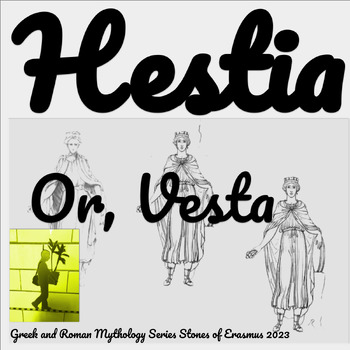@cafedumonde "I use my Granny voice and tell the story of Cronus and how he was dethroned by Zeus, thus beginning the Titanomachy." #GreekMythology #Cronus #Zeus #Titanomachy #Storytelling #ancientlegends ♬ Moonlight Sonata - Beethoven - Classical Piano - Instrumental Classical Music - Classical Playlist - Sleeping Music - Music For Relaxation - Classical Piano & Classical Music & Classical
In the intricate tapestry of Greek mythology, few figures stand as tall as Kronos, or Saturn, the eminent ruler of the Titans. The child of Gaia, the earth, and Uranus, the sky, Kronos epitomizes a generation of divine entities that have forever etched their stories in our cultural psyche. Commonly recognized as the God of Time, a title possibly introduced later by Greek writers like Hesiod, Kronos' tale commences at the heart of the cosmos, quite literally birthed from the earth and sky.
 |
| Rhea tricks Kronos |
A pivotal figure, Kronos ascended to power in a manner that was anything but ordinary. In a bold move of patricide, he seized power from Uranus, his father, through a gruesome act of castration. Ouch. This gruesome act had far-reaching consequences. In a twist of mythological irony, the remains of Uranus's severed genitals mingled with the sea and gave birth to Aphrodite, the Goddess of Love. And that's what love's got to do with it — a tale that powerfully demonstrates the interconnectedness of love and strife.
Kronos' union with Rhea, one of the Titanides, was steeped in tumult and apprehension. Haunted by the specter of his brutal ascension, Kronos was convinced that his children would repeat his actions. Driven by fear and paranoia, he devoured each newborn — Hestia, Demeter, Hera, Hades, and Poseidon. However, Rhea, weary of her husband's horrifying dietary habits, hatched a plan to save their last child, Zeus.
In an act of maternal bravery, Rhea tricked Kronos by giving him a stone cloaked in infant's clothes instead of her newborn. Meanwhile, Zeus was spirited away to the island of Crete, where nymphs tenderly cared for him until he came of age. As an adult, Zeus infiltrated Kronos' court, cunningly earning the Titan King's trust as his cupbearer. When the time was ripe, Zeus served Kronos a potent concoction that caused the Titan to regurgitate his swallowed children. This act marked the beginning of Zeus' retribution, leading to a decade-long war and, ultimately, the retrieval of his rightful Olympian throne.
Indeed, Kronos' narrative is a compelling tapestry of cosmic power plays, familial betrayal, cunning stratagems, and ultimate redemption. Through its rich, engaging tales, Greek mythology continues to captivate, offering timeless lessons on life, power, and destiny.
Looking to impart a riveting 3-day lesson to your middle or high school students in English Language Arts or Humanities? We've got you covered. Head over to the Stones of Erasmus store and grab a copy today. Enhance your teaching experience effortlessly.



